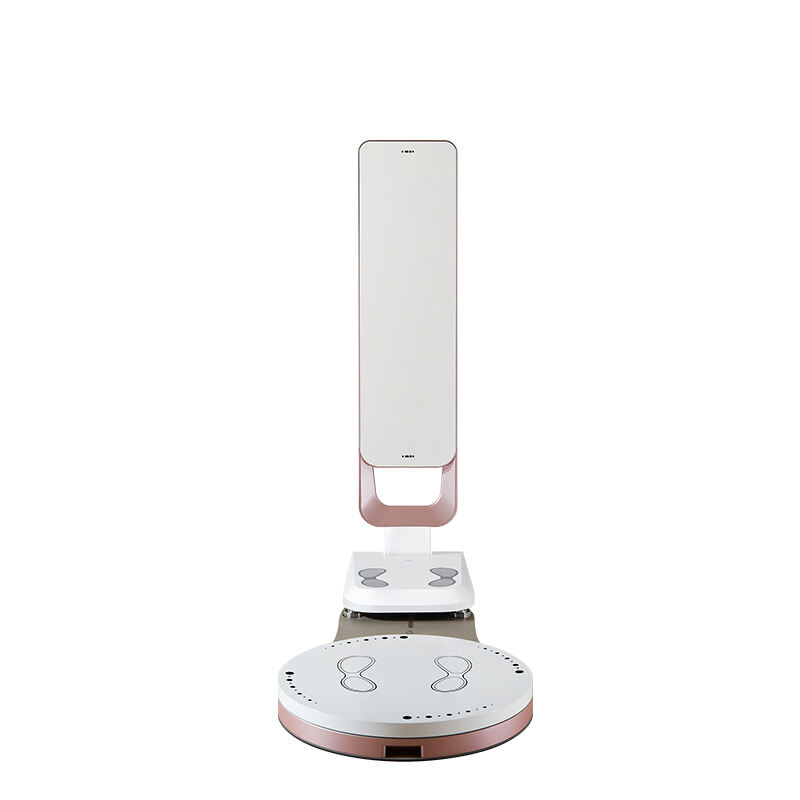Visceral Fat Analysis
Understanding the severity of diabetes risk
Current methods of visceral fat estimation are indirect and imprecise, making them ineffective for overall health risk assessment and long-term follow-up. Visceral fat estimation using Youjoy, on the other hand, can reflect the presence of a higher risk of hypertension, high cholesterol and diabetes.
Waist circumference is an indirect indicator of general and visceral obesity; however, this method is imprecise and insufficient to monitor changes over time. By using Youjoy to analyse body composition, medical professionals can rely on accurate and consistent measurements to understand a patient's risk of developing diabetes and/or other health conditions. Youjoy 's visceral fat area is strongly correlated with diabetes risk, and outputs such as the Oedema Index (ECW/TBW Ratio) can also help to track diabetes-related inflammation. All of this data helps diabetes specialists better determine factors that may be causing health risks and prescribe better medication
Muscle-fat and segmental muscle analysis
Monitoring muscle and fat distribution
Excess fat mass and low muscle mass may both contribute to an increased risk of diabetes. However, body composition analyses for diabetes risk are not accurate or consistent. Quantifying muscle and fat content by site provides insight into the composition of each site and the entire body, allowing for a better diagnosis of diabetes risk and guiding treatment options.
Diabetes is often associated with excess fat, but insufficient muscle mass can also increase the risk of developing diabetes. Leg muscles are the largest muscle group in the body and promote glucose uptake; low leg muscle mass is associated with an increased risk of insulin tolerance.
Medical professionals can use Youjoy to analyse and monitor a patient's muscle and fat composition. Output data such as segmental and leg muscle provide more insight into leg muscle composition and whole body fat storage. By monitoring these factors, specific treatment plans can be developed for individual patient physiology, and physicians and instructors can track the progress and success of treatments and interventions.
Segmental ECW/TBW Body Water Analysis
Monitoring fluid retention in various parts of the body
Excess visceral fat and systemic inflammation caused by pro-inflammatory hormones increase the risk of fluid retention and co-morbidities such as cardiovascular and kidney disease. Direct and objective measurement of body water allows for better detection of fluid retention and reduces the risk of developing diabetes-related co-morbid health conditions.
Using YouJoy, medical professionals can directly measure extracellular fluid and total body water content and calculate ECW/TBW, an index that tracks inflammation and fluid imbalance throughout the body. By monitoring the oedema index (ECW/TBW), extracellular fluid accumulation in the airspace due to impaired cardiovascular function can be analysed.
By determining the ratios for the entire body as well as for each part of the arms, legs, and trunk, it is possible to identify areas where body water imbalance may be occurring in order to analyse and detect trunk or leg oedema more accurately and early, helping cardiologists to develop a more effective strategy for body water management and improving patient outcomes.
Body composition testing history
Tracking changes in muscle, fat and body water balance to chart development
The best way to prevent or reverse diabetes is to make behavioural and lifestyle changes that are conducive to good health. However, it is often difficult for health professionals to engage patients in therapeutic diets and exercise regimens, and the Youjoy device provides patients with detailed body composition reports that do not reflect normal weight measurements, as well as an outline of exercises to explore lifestyle changes. In addition, patients and providers can use the Body Composition Test History section to chart progress during the intervention and make adjustments to optimise results and health.
Skeletal Muscle Index
Detecting the Risk of Weakness and Oligomyosarcoma
People with diabetes are prone to losing muscle mass, and as diabetes continues, muscle mass loss increases, leading to other conditions such as oligomuscular disease.Youjoy provides Skeletal Muscle Index (SMI) outputs that can be used to monitor skeletal muscle mass and help prevent or identify oligomuscular disease.
We know that skeletal muscle mass is important to monitor for diabetes. This is because glucose is not available for muscle production and reduced physical activity leads to muscle mass depletion. Diabetes also increases fatigue and further reduces physical activity and function. This loss of muscle mass in turn increases the risk of developing other conditions such as oligomuscular disease and mobility disorders.
Oligomyopathy refers to the loss of skeletal muscle mass, which can lead to reduced functional mobility and quality of life, as well as an increased risk of hospitalisation and death. Oligomyopathy is usually associated with aging, although a sedentary lifestyle or even disease can also predispose people to oligomyopathy. The Skeletal Muscle Mass Index (SMI) can be used to analyse and monitor skeletal muscle mass, which can help in the diagnosis of oligomuscular disease. SMI is the ratio of the sum of skeletal muscle mass of the limbs to the square of height.
Given the muscle loss often associated with diabetes and the link between diabetes and oligomuscular disease, it is important to monitor the risk of oligomuscular disease in people with diabetes. Medical professionals can use the SMI output from the Youjoy test results to identify conditions of increased weakness, determine the risk of oligomuscular disease, and enhance training and intervention.















































